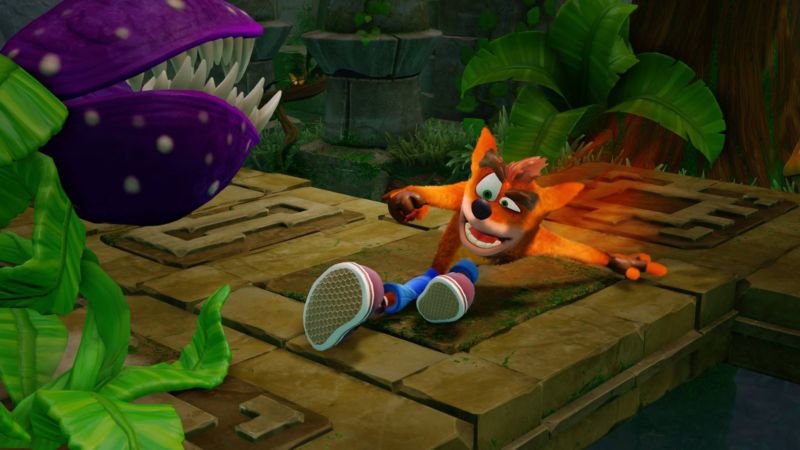
I was happy to offer reluctant praise for the content-loaded Crash Bandicoot N. Sane Trilogy earlier this month, but I am admittedly not a Bandi-cologist. I have been watching how more hardcore fans, such as speedrunners, might react to this anthology, which required a full code rewrite, and eagle-eyed fans caught some issues that I didn't.
The anthology's developers at Vicarious Visions took to their official blog on Monday to confirm the issue: yep, you're not imagining things.
"Our game engine features a different collision system than the original game, and combined with the addition of physics, certain jumps require more precision than the originals," the Monday blog post reads. This admission joins a longer description of how the jumps in each of the anthology's original PS1 games had different animation speeds and tunings, which VV only preserved to a certain extent. All three games' basic handling systems are now derived from the Crash 3 model, VV says, and "jump tunings" have been attached to the updated Crash 1 and Crash 2 to make them feel a little more like the originals.
Well, with one exception: now, in Crash 1, "you fall more quickly upon release of the X button than you did in the original first game," the company writes.
This lack of definitive game-by-game emulation contrasts sharply with Vicarious' statements to Ars Technica in an E3 interview. At that time, Vicarious designer Dan Tanguay stressed specific game-by-game elements that were examined and addressed (again, all from scratch) in an effort to "earn speedrunner love." When Tanguay spoke at length about how the series' crates break and affect momentum differently in each game and how his team made sure to address those concerns, I didn't even think to ask if the jumps would feel different on a game-by-game basis.
VV's blog admission may show one reason that the anthology launched at a reasonable $40 price point. As this week's blog post states, the Crash 3 handling model may very well "unify the design" and provide "a cohesive experience across all three games." But it also saves the developer the legwork of creating distinct animation and physics systems for three games; instead, one engine could do the trick, with "jump tunings" used to more simply fake the accuracy of the other games. That guess is offered entirely as speculation, as opposed to being based on anything VV said in its blog post. But remember, this is a creative industry that very recently tried to convince its fans that modeling and animating a female character was too much work.
Clearly, VV's work in eyeballing and video-analysis was ample enough to reveal the exact tunings that fueled each of the first three Crash games, as evidenced by this lengthy post. The team's ability to preserve the original games' mechanics was not hindered by data discovery. For a game that relies so much on agonizingly difficult and frame-perfect jumps, any admission that players need to bring more precision and more careful jump timings to the experience is not a good one. But after reading the blog post, which describes all of these changes as efforts toward design "unity," it stands to reason that the anthology will not be patched or updated to make the anthology a more accurate representation of its source material.
reader comments
59